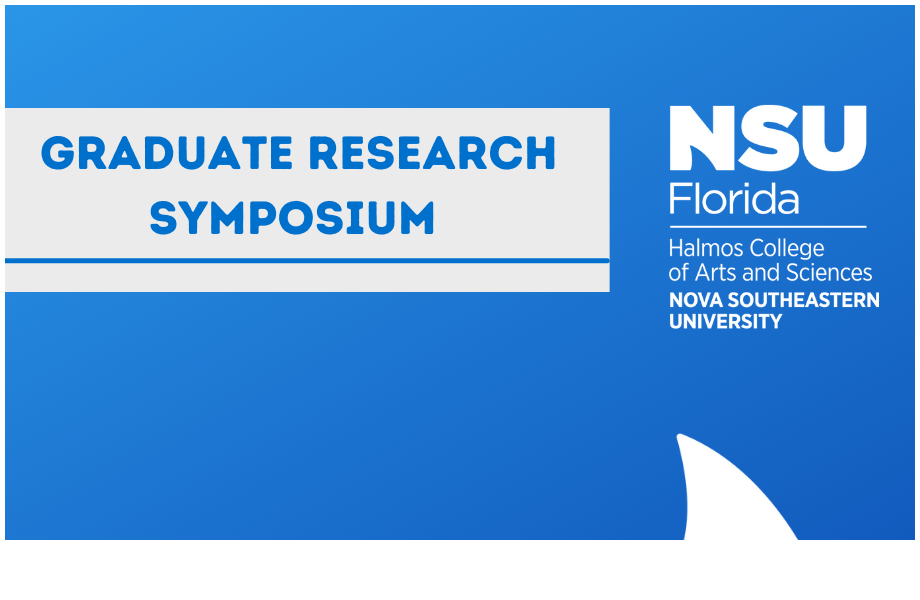Parasitic Indicators of Foraging Strategies in Wading Birds: A Great Blue Heron Case Study
Location
Guy Harvey Oceanographic Center Facility
Start
1-31-2018 10:00 AM
End
1-31-2018 10:15 AM
Type of Presentation
Oral Presentation
Abstract
Feeding ecology and trophic interactions of great blue herons were explored through a combined analysis of stable isotope profiles and endoparasite communities. Stable isotopes broadly characterize the feeding preferences and geographic information of individuals, while parasite communities reflect long-term trends in diet, feeding ecology, movements, and environmental changes. We obtained deceased birds from four south Florida wildlife rehabilitation organizations. Stable nitrogen (δ15N) values for pectoral muscle tissue, representing a timescale of approximately 24 days, ranged from 8.54 to 13.48; ± SD (‰): 11.08 ± 1.23, while stable carbon (δ13C) values for muscle tissue ranged from -28.15 to -11.66; ± SD (‰): -19.57 ± 5.47. Of the 30 birds dissected, 26 contained parasites. Host biometrics, stable isotope values (analyzed together), and the parasite community were analyzed at phylum resolution. Stable isotope values were significantly correlated with biometrics (rho=0.203; p=0.003). Parasite community structure and composition were not significantly correlated with host biometry (rho=0.024; p=0.353) or stable isotope profile (rho=0.067; p=0.109). ANOSIM was then used to examine the differences in biometrics, stable isotope profile, and parasite community structure among sampling locations. Great blue heron biometrics did not vary significantly among locations (R=0.068; p=0.277). However, there was a significant difference in stable isotope profiles (R=0.495; p=0.001), largely driven by variation in carbon rather than nitrogen. This result, combined with a lack of variation in community structure of trophically acquired parasites, suggests that variation in stable isotope profile is being driven by differences in feeding location rather than diet.
Parasitic Indicators of Foraging Strategies in Wading Birds: A Great Blue Heron Case Study
Guy Harvey Oceanographic Center Facility
Feeding ecology and trophic interactions of great blue herons were explored through a combined analysis of stable isotope profiles and endoparasite communities. Stable isotopes broadly characterize the feeding preferences and geographic information of individuals, while parasite communities reflect long-term trends in diet, feeding ecology, movements, and environmental changes. We obtained deceased birds from four south Florida wildlife rehabilitation organizations. Stable nitrogen (δ15N) values for pectoral muscle tissue, representing a timescale of approximately 24 days, ranged from 8.54 to 13.48; ± SD (‰): 11.08 ± 1.23, while stable carbon (δ13C) values for muscle tissue ranged from -28.15 to -11.66; ± SD (‰): -19.57 ± 5.47. Of the 30 birds dissected, 26 contained parasites. Host biometrics, stable isotope values (analyzed together), and the parasite community were analyzed at phylum resolution. Stable isotope values were significantly correlated with biometrics (rho=0.203; p=0.003). Parasite community structure and composition were not significantly correlated with host biometry (rho=0.024; p=0.353) or stable isotope profile (rho=0.067; p=0.109). ANOSIM was then used to examine the differences in biometrics, stable isotope profile, and parasite community structure among sampling locations. Great blue heron biometrics did not vary significantly among locations (R=0.068; p=0.277). However, there was a significant difference in stable isotope profiles (R=0.495; p=0.001), largely driven by variation in carbon rather than nitrogen. This result, combined with a lack of variation in community structure of trophically acquired parasites, suggests that variation in stable isotope profile is being driven by differences in feeding location rather than diet.


